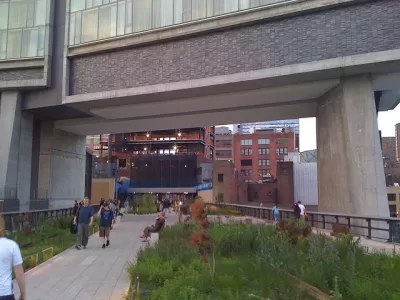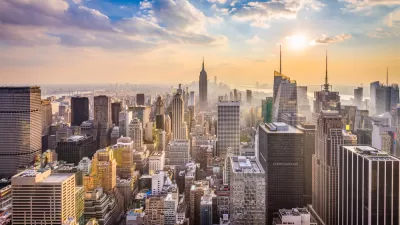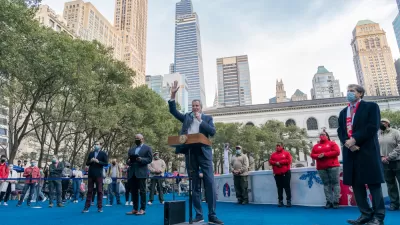With travel restrictions requiring quarantines for many out-of-state visitors to New York City, the normal hordes of tourists on New York's High Line will be absent for months to come.

Washington Post columnist Adrian Higgins checks in the with the High Line in New York City, which has been vacated during the pandemic much like it was before its famous adaptive reuse and evolution into a tourism magnet and a controversial symbol of gentrification.
Now, with the city taking tentative steps to reopen and travel restrictions into New York in place, the High Line is likely to evolve again. Higgins writes:
In the interval between limited reopening and a world back to normal, whenever that may be, the High Line will become something closer to its original idea, a quirky postindustrial gift to the West Side. It may become for New Yorkers what the cultural treasures of Florence and Venice are now for their citizens: havens devoid of the hordes of out-of-towners.
According to Higgins, the Friends of the High Line is actively discussing how to implement and enforce social distancing on the eight-foot wide path, but no decisions have been made yet. It also "may take years for New York to return to the level of tourism — some 65 million visitors a year — it attained before the coronavirus crisis," according to Higgins.
FULL STORY: The High Line has been sidelined. When it reopens, New Yorkers may get the park they always wanted.

Trump Administration Could Effectively End Housing Voucher Program
Federal officials are eyeing major cuts to the Section 8 program that helps millions of low-income households pay rent.

Planetizen Federal Action Tracker
A weekly monitor of how Trump’s orders and actions are impacting planners and planning in America.

Ken Jennings Launches Transit Web Series
The Jeopardy champ wants you to ride public transit.

Washington Legislature Passes Rent Increase Cap
A bill that caps rent increases at 7 percent plus inflation is headed to the governor’s desk.

From Planning to Action: How LA County Is Rethinking Climate Resilience
Chief Sustainability Officer Rita Kampalath outlines the County’s shift from planning to implementation in its climate resilience efforts, emphasizing cross-departmental coordination, updated recovery strategies, and the need for flexible funding.

New Mexico Aging Department Commits to Helping Seniors Age ‘In Place’ and ‘Autonomously’ in New Draft Plan
As New Mexico’s population of seniors continues to grow, the state’s aging department is proposing expanded initiatives to help seniors maintain their autonomy while also supporting family caregivers.
Urban Design for Planners 1: Software Tools
This six-course series explores essential urban design concepts using open source software and equips planners with the tools they need to participate fully in the urban design process.
Planning for Universal Design
Learn the tools for implementing Universal Design in planning regulations.
Heyer Gruel & Associates PA
Ada County Highway District
Institute for Housing and Urban Development Studies (IHS)
City of Grandview
Harvard GSD Executive Education
Toledo-Lucas County Plan Commissions
Salt Lake City
NYU Wagner Graduate School of Public Service





























